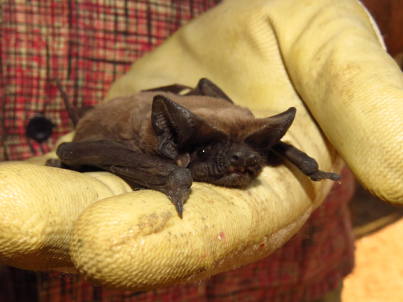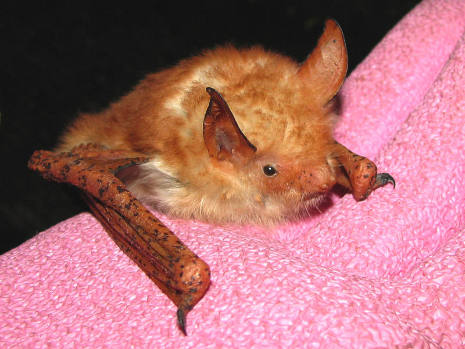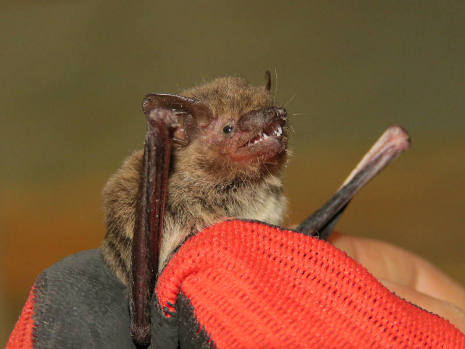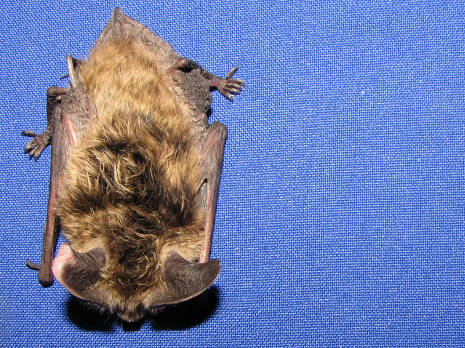Found a Bat?
For Injured or Baby Bats Contact Friends of Free Wildlife:
Website: freewildlife.co.za
E-mail: info@freewildlife.co.za
Marion Heaney (General & Northern Suburbs): 082 327 8531
Karin Squirrel (West Rand): 082 701 8318
Margi Brocklehurst : 082 561 3681
Wendy Brodie : 083 302 2181

If you have you come across any interesting bats that you would like identified or just know more about, contact us. Send photos and any other relevant details such as its location and the date it was seen. Bats can be very difficult to identify by photo alone, but with additional information it is often possible to get to an answer.
For more information on Bats in Buildings, visit our Bats in Buildings page.

Returning baby bats to their mothers
Baby bats found near a roost can simply be placed back in the roost otherwise, keep the bat warm until dusk when it should be placed outside on a high, flat area, e.g. the garage roof. The babies emit a distress call that the mother will respond to if she is within hearing distance and will come and collect her baby. Should the mother not return after about an hour, the baby would need to be taken to a rehabilitation centre where it can be hand raised.
Contact Friends of Free Wildlife for more assistance

When you find a bat indoors
Follow these steps to help your bat find its way outdoors:
- Close any doors you can to contain the bat in a single room or space.
- Open all the doors and windows as wide as you can in that room or area.
- Turn any outside lights on, e.g. the porch lights.
- Turn the lights in the room off or down.
- Stay in the room, sit down, be quiet, relax, and watch the bat. If you don’t, you will not know if it actually left or has landed and is resting somewhere.
- Do not try to guide the bat with a broom, tennis racket, etc. You do not need to cover your head, it does not want to get in your hair.
The bat, if allowed to, will navigate its way out using the light outside and the draft created by the open window/door. This may take 20 minutes or so. Often, despite its superior navigation skills, the bat is too stressed to think clearly and may fly around in circles for some time until it calms down and finds its way out.
If it has landed somewhere, it may be captured and released outside after sunset. It might be found behind curtains/drapes, pictures or upholstered furniture, to name a few places.
Approach your visitor very slowly and quietly. Avoid touching the bat with your bare hands, since it does not know that you are trying to help and may bite. Gently place a small can or box over the bat, slide cardboard underneath, and release your visitor out of doors at dusk, placing it on a high surface where it will be able to take off. Alternatively, use gloves or a towel to gently grab the bat.
If the bat does not fly away, or attempts to fly but seems unable to, it is likely that it has an injury or illness. It may also be a disoriented juvenile, or it may be dehydrated or starved from being trapped indoors.
If this is the case, keep the bat in a closed box or container with a towel (never a jar) and put it in a safe place that is free of children, pets, ants and other hazards.
Then contact Friends of Free Wildlife for further advice at:
Email: info@freewildlife.co.za
Marion Heaney (General & Northern Suburbs): 082 327 8531
Karin Squirrel (West Rand): 082 701 8318
Margi Brocklehurst (General & Northern Suburbs): 082 561 3681
Wendy Brodie (General & Northern Suburbs): 083 302 2181
A grounded and/or injured bat

Avoid touching the bat with your bare hands, since it does not know that you are trying to help and may bite. Gently place a small can or box over the bat, slide cardboard underneath, and release your visitor out of doors at dusk, placing it on a high surface where it will be able to take off. Alternatively, use gloves or a towel to gently grab the bat.
If the bat does not fly away, or attempts to fly but seems unable to, it is likely that it has an injury or illness. It may also show obvious signs of injury.
In either case, keep the bat in a closed box or container with a towel (never a jar) and put it in a safe place that is free of children, pets, ants and other hazards.
Then advice from a rehabilitation centre should be sought (see contact details above).
